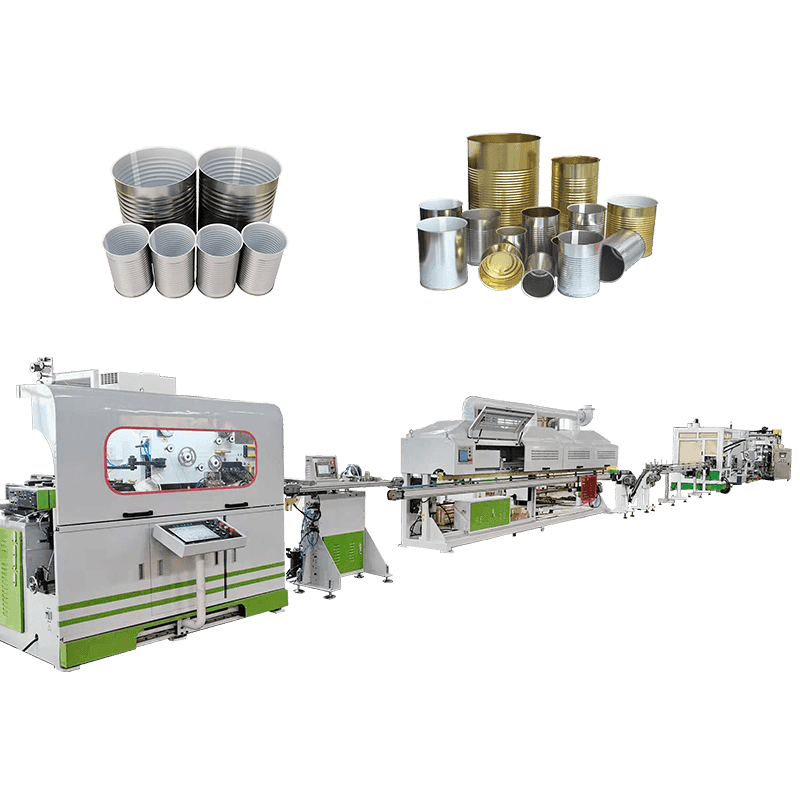Basic Overview of the Twist-off Lug Cap Production Line
The twist-off lug cap production line is an equipment system used to produce twist-off packaging caps (usually used for bottled products such as beverages, cosmetics, medicines, etc.). It efficiently completes multiple production links from raw material delivery, molding, gluing to final inspection in a mechanized and automated manner. Twist-off lug caps are widely used in the packaging industry due to their good sealing, convenient use, and simple operation. The main functions of the production line include raw material processing, lug cap molding, sealing processing, quality inspection, etc.
Raw material processing and transportation
The production of twist-off lug caps starts with the preparation of raw materials. One of the initial functions of the production line is to transport raw materials (usually plastic or aluminum materials) from the raw material warehouse. In order to ensure the smooth progress of the production process, the raw material delivery system needs to efficiently and stably deliver the required raw materials to each link of the production line. Generally speaking, the production line is equipped with an automatic raw material delivery device that can automatically identify the quantity of raw materials and ensure their timely supply.
Through efficient raw material processing and transportation, the production line can ensure the continuity of the production process, reduce human intervention, and improve production efficiency.
Molding and pressing
The main structure of the twist-off ear cover is usually made of materials such as plastic and aluminum. In the twist-off ear cover production line, the molding process is a very important part. The molding system processes the raw plastic or metal material into the shape of the ear cover through heating and molding processes. The molding part of the production line usually adopts injection molding or die-casting processes to ensure that the ear cover has the required shape and dimensional accuracy.
The molding part is usually equipped with advanced mold technology and temperature control system to ensure the appearance quality and functionality of the ear cover. For example, the design of the mold needs to meet the dimensional requirements of the ear cover to ensure the accuracy of the sealing ring and threaded part, so as to achieve a better sealing effect.
Sealing and gluing treatment
One of the core functions of the twist-off ear cover is sealing. The sealing system of the production line uses precise gluing and hot pressing processes to make the ear cover have good sealing performance. The gluing system applies sealant to the sealing ring of the ear cover to ensure that it is tightly combined with the bottle mouth to prevent external air from entering or liquid leakage.
The sealing system also needs to strictly control the thickness and uniformity of the glue coating to ensure consistent sealing effect of each ear cover. This link not only has an important impact on the sealing performance of the product, but also directly affects the reliability and market competitiveness of the lug cap.
Automatic assembly and screwing
The twist-off lug cap production line is equipped with an automated assembly system that can efficiently and accurately screw the lug cap to the bottle mouth. The automatic screwing function tightly combines the lug cap with the bottle mouth through a rotating operation. This process not only requires the lug cap to be tightly connected to the bottle mouth, but also requires the adjustment of the screwing force to avoid damage to the lug cap caused by excessive screwing or leakage caused by too loose.
The automated assembly system can also ensure that each bottle can be accurately and quickly installed with a twist-off lug cap, reducing the error rate of manual operation and greatly improving production efficiency.
Quality inspection and exception handling
The quality inspection system of the production line usually includes multiple links to ensure that each lug cap produced meets quality standards. The inspection content includes appearance inspection, thread inspection, sealing performance inspection, etc. of the lug cap.
The appearance inspection of the lug cap uses visual sensors to automatically identify whether there are defects on the product surface, such as scratches, deformation or contamination; the thread inspection uses a rotating torque test device to ensure that the thread of each lug cap meets the specifications; the sealing inspection simulates the installation of the bottle mouth to detect the sealing effect of the lug cap to avoid leakage problems.
When unqualified products are detected, the production line usually removes them from the production process through an automated system to reduce the defective rate and ensure the quality of the final product.
Efficient production and automated management
Modern twist-off lug cap production lines use highly automated control systems that can monitor every link in the production process and adjust production parameters in real time to ensure efficient operation of the production line. Automated management not only reduces labor costs, but also improves production efficiency and stability.
The automated control system of the production line can usually adjust production speed, temperature, pressure and other parameters according to demand to adapt to different raw materials and production requirements. At the same time, the system can also record production data, conduct real-time analysis, optimize the production process, and improve product quality.
Safety and environmental protection functions
The design of the twist-off lug cap production line also needs to take safety and environmental protection into consideration. In terms of safety, the production line is usually equipped with emergency stop devices, overload protection devices, etc. to ensure the safety of operators. At the same time, the production line is also equipped with protective covers and isolation devices to prevent accidental injuries during the production process.
In terms of environmental protection, the production line adopts a low-energy consumption and low-emission production method, which meets modern environmental protection requirements. The discharged waste gas and wastewater are usually treated through a purification system to reduce pollution to the environment.

 English
English عربى
عربى русский
русский




